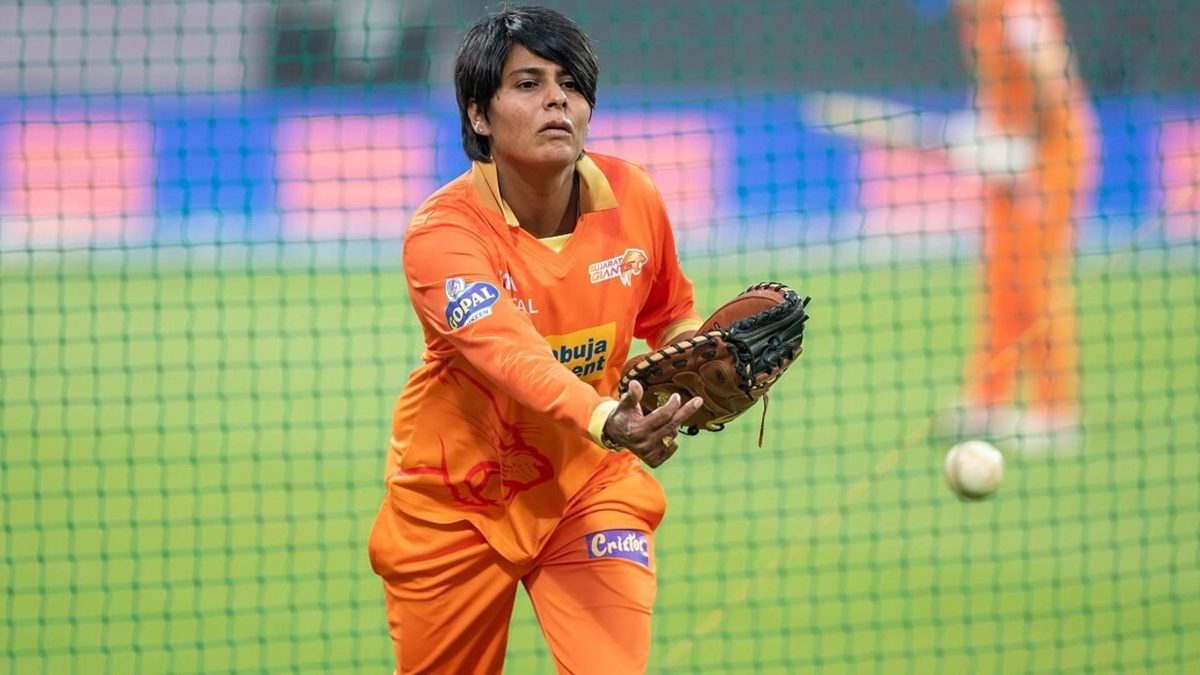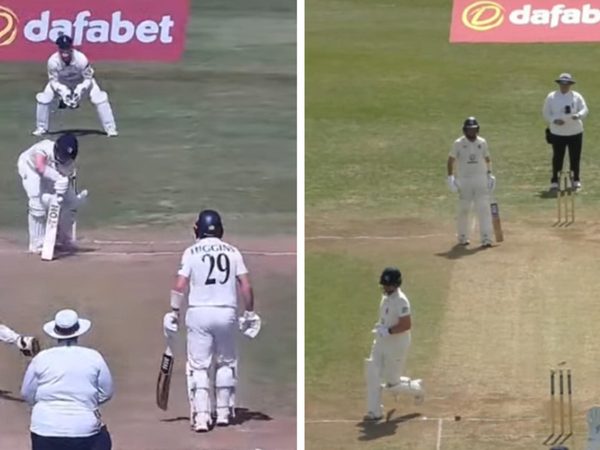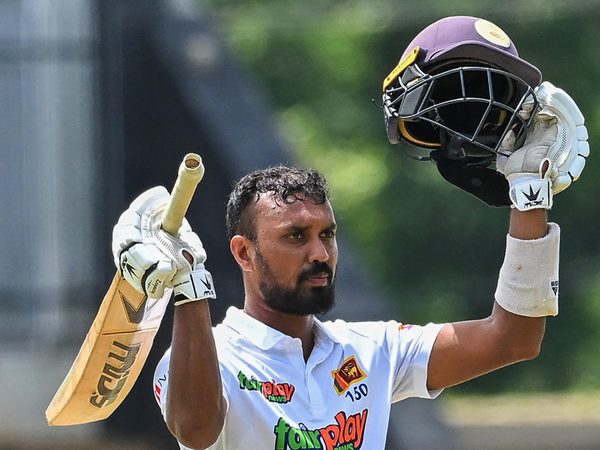
Nooshin Al Khadeer picked up 100 ODI wickets, played a World Cup final in 2005, coached India U19s to World Cup title in 2023, coaches Railways – the most successful women’s team in Indian domestic cricket – and is the bowling coach of the Gujarat Giants. She spoke to Abhishek Mukherjee on her latest role in the WPL with Gujarat Giants.
For much of the 2000s, Nooshin Al Khadeer formed a famous spin duo with Neetu David. After retirement, she became one of the most celebrated coaches on the Indian circuit.
When the Women’s Premier League was announced, it was only a matter of time before she was recruited by one of the five franchises. She eventually joined the Gujarat Giants as their bowling coach.
The journey began at the auction, where the five teams all had to begin with a clean slate. How did the Giants go about it, with no template to follow?
“All the teams were new in terms of bidding,” she says. “We had our drafts ready for a few key players whom we wanted, keeping in mind that we may miss out on them because there were other teams also going for those players. Ultimately when you sit down, you want your team combination to be right. You want to set your narrative. You want to first set your 15 (squad) and then set-up your XI.
“A lot of hard work [is] put into an auction just to get your strategies right in terms of the combination and balance. Unfortunately, in the beginning of the tournament, we had to lose out on Deandra [Dottin] and Beth Mooney. We had to have the players backing them up to balance the side again. So it was quite exciting, actually, in the auction for the first time.
“Frankly speaking, I would rather see myself working on the ground than sitting here doing this work because it takes a lot of energy and your mind has to be on it, but it’s a good learning experience.”
Dottin was ruled out of the season due to a confusion over a fitness certificate, while Mooney retired hurt during the first match and did not return. It took time for Gujarat to regroup, more so because of the hectic build up to the inaugural edition of the tournament.
“The window for the camp was quite short,” says Al Khadeer. “The overseas players had just come one day before the tournament was kicking off, because of the World Cup played in South Africa… I believe, for the IPL, they do have a lot of camps. The [WPL] windows have been very hard. Obviously, you need to regroup as a team. It takes some time. You need to understand how the combinations are.
“Finally, you see the team has been doing quite well because of the combinations which have been set. It’s bound to happen when you have less time [with] players coming from different cultures. But ultimately, you know, the players are the people who adjust quickly, and the support staff because we work in tandem. It has been a good graph, I would say.”
With two wins in eight matches, Gujarat Giants finished fifth in the league stage of the tournament, level on points with the Royal Challengers Bangalore and two points behind the UP Warriorz. But Al Khadeer emphasises the bigger picture: “Our team has scored 200 runs [201-7 against Royal Challengers Bangalore],” she says. “Our team is the only team which has taken 10 wickets of Mumbai Indians [162-8] and Delhi capitals [136], so the bowling unit has done well.
“Running through a Mumbai Indians batting lineup was not easy, but Gujarat Giants have done that. Against Delhi, it was only Shefali [Verma] and Meg Lanning doing the job. Their middle order was never tested. We got them all out. In a T20 game, it’s just about on that particular day, how teams are faring.
“But overall, if you see the graph of the Gujarat Giants, the girls have really done well. They held their nerves and it’s just matter of one over, like that match we lost against Lucknow. Innings like [Grace] Harris, innings like Sophie Devine are one of a kind. Unfortunately, Gujarat was the team which was facing that.”
There was the fielding too: “They have been quite very agile on the field. We’ve got some crucial run outs and some brilliant catches on the field. So as a unit they’ve really done well.”
With no Mooney, Sneh Rana stepped up as captain. Al Khadeer and Rana go back a long way. As coach and captain, they had been at the helm of the all-conquering Railways side.
“Sneh Rana has been a very good leader,” says Al Khadeer. “We’ve seen her leading just not the franchise, but she has also led Railways, she has led India A, she has led Challengers and she has been a champion captain. She has won all the trophies, so this was not new to her and [she’s] very calm and composed at that level – that’s one of the best qualities that she has.
“She’s not too expressive and she knows how to hold herself. Initially when I wanted her to lead Railways [because] that is one quality I really admired about her. That expressionlessness… you really don’t know what is running in her head and that’s the key to a captain.”
But while Rana was a familiar face, the overseas superstars were not. This was the first time so many Indian cricketers shared dressing-rooms with overseas giants in the women’s game. How did the those who came in with huge reputations from around the world, fit into a new team environment?
“It’s just about adapting to the [different] cultures,” says Al Khadeer. “I have seen Harleen [Deol] discussing with a lot of foreign players whether they would they would love to have paani-puri. They go out to cafes and hang out on off-days.
“They have their own wind-ups as players which is nice, and they have plans on the bus – they regroup, they sing and they share a lot of thoughts. So it’s among the players that they adapt to that culture and it’s quite exciting.”
As the overseas stars settled in, the Indian cricketers reaped the rewards. “For domestic players like Ashwani [Kumari] or the Under-19 kids, it is a very big thing,” she says. “Look at the kind of exposure they are getting, look at the kind of innings they are getting to watch, be it from the opposition or be it from the Gujarat Giants.
“An elite player is not going to question, [but] when you’re Under-19 kids or coming from domestic [cricket], you have heaps of questions because you want to understand a lot of things. It’s very, very healthy. Now we are lined up with a lot of NCA camps and I’m sure they’re going to share this experience with a lot of other Under-19 and Under-15 girls. It’s going to be quite exciting.”
Did Al Khadeer the coach have to adjust? Was it any different from coaching Railways or Under-19 sides? “Yes,” she says. “The [team] names are different, because Gujarat, Railways, India Under-19. But the coaching style doesn’t differ because that’s a characteristic which is within me, that’s how I am. And I, as a coach, I perform that way. So not much different. Only the titles are different, I would say.”
Every team had to play eight matches in two weeks in the tournament, at times on consecutive days – an inevitability with only five teams. Was the WPL schedule too hectic, even for cricketers who often do the same in domestic tournaments?
“I really don’t think so,” says Al Khadeer. “If this question had arisen five-six years back, I would said yes, it was hectic. But with the kind of cricket every player is playing – not in India but overall – I would say no. You see a WBBL happening in Australia, back-to-back games with international games. This is what women cricketers have asked BCCI for, and we are getting it. I don’t think that we should be thinking that it’s been too hectic.”
How big has the WPL been? “It’s not a short-term investment,” she says. “It’s a long-term investment, obviously. This year, the matches have been quite exciting. I would say the public has been glued to their seats to understand where the match was going to be. You have these huge sixes happening, you have high-scoring games happening, which is good for women’s cricket, and I see this progress.
“If you remember in 2017, when Harmanpreet Kaur scored that 171 against Australia in the semi-finals, people didn’t know what power hitting was at that point in time. But people like Shefali [Verma] and Richa [Ghosh] are coming up, they were babies then. You see them taking this role. Somewhere, Harman [Kaur] had impacted a lot of players to take up the sport.
“Today, you see a Sophie Devine play that innings [99 against Gujarat Giants]. I’m sure the impact has been laid on 15-20 girls. Young kids do believe that they can do this miracle. The WPL is going to go a big way, because every match is motivating 10-15 girls to take up the sport.”
What does the future hold for the franchise? “The Gujarat Giants are looking forward to promote cricket for a very long time, especially women’s sport,” she adds. “There is an academy which they are planning to rebuild, to get the facilities for women to start training there. There are other things lined up as well. The franchise is looking at a very long-term period, providing the best of the facilities to promote women’s sport.”








